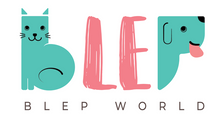If your dog is carrying extra weight, it's like they're always wearing a heavy winter coat. This can be bad for their health and might make their life shorter. So, it's essential to notice if your pet is getting chubby and do something about it.
Aside from making sure your dog gets more exercise and being careful with how many treats they get, there are particular foods made to help dogs lose weight. These foods are designed to give your dog the proper nutrition but with fewer calories, like a diet for dogs. So, it's like helping your dog slim down with the right food. It's always a good idea to talk to the vet to figure out the best plan for your dog's health.
What is the right food to help my dog lose weight?
Your veterinarian is your go-to expert for helping your dog loses weight, offering the best advice and personalized guidance for a successful weight-loss journey. Ask them about the specific amount of weight your dog should lose and how many calories they should consume daily to achieve that goal. This calorie count includes the leading dog food meals and treats your dog gets throughout the day. Your vet's expertise will ensure you have a precise plan tailored to your dog's needs. While you could try figuring out the calorie calculations on your own, seeking advice from your vet simplifies the process, making it easier for you to support your dog on their weight loss journey.
Before you give your dog a new type of food, think about these things:
1. Age: Consider your dog's age when choosing their food. Puppies need different food than older dogs. If you're getting food for weight loss, read the labels and choose the right one for your dog's age. Ask your vet to ensure you're feeding the correct amount based on your pet's age and stage of life.
2. Breed: Choose the food that fits your dog's size and type. Smaller dogs, such as toy poodles, need different food than larger dogs like Labradors. When selecting weight-loss dog food, consider the recommended amounts and types based on your pet's size. Certain breeds, like labradors, beagles, and basset hounds, are more prone to gaining weight, so it's crucial to be extra cautious with their diet to keep them healthy. Consider your dog's specific needs and consult your vet for personalized advice.
3. Food Label: When looking for dog food to help your pup lose weight, check for labels that say "weight management" or "weight control." These foods have fewer calories than the regular kind your dog eats. It's like choosing a salad instead of pizza for yourself. These foods have more fiber, making your dog feel full without overeating. They're also designed to ensure your dog gets all the essential nutrients. It's crucial to know that some dogs might need exceptional weight-loss food that you can only get with a prescription from the vet. These foods are made for weight loss and tailored to your dog's health needs. Always listen to your vet's advice for the best results.
Advantages of weight loss dog foods

Weight loss dog foods offer several benefits for dogs struggling with excess weight. Here are some of the advantages:
1. Calorie Control: Weight loss dog foods are formulated with lower calorie content, helping to reduce overall calorie intake. This is essential for dogs trying to shed extra pounds.
2. Higher Fiber Content: Many weight loss formulas contain higher levels of fibre, which can help dogs feel fuller for more extended periods. This can be beneficial in managing hunger and preventing overeating.
3. Nutrient Balance: Despite being lower in calories, weight loss dog foods are designed to provide essential nutrients to ensure that dogs receive a balanced diet. This is crucial for maintaining overall health during the weight loss process.
4. Joint Health: Excess weight can strain a dog's joints, leading to arthritis. Weight loss dog foods can contribute to gradually reducing weight, easing the strain on joints and supporting overall joint health
5. Muscle Preservation: Preserving muscle mass is essential during weight loss. High-protein content in weight loss dog foods helps maintain muscle while encouraging fat loss.
6. Regulated Metabolism: These foods can help your body burn calories better, making it easier to lose weight.
7.Veterinary Oversight: In some cases, weight loss dog foods are available by prescription, ensuring that the diet is tailored to the dog's needs. This allows for closer monitoring and adjustments under the guidance of a veterinarian.
It's crucial to note that weight loss in dogs should be gradual and monitored by a veterinarian. If your dog is dropping weight too fast, it's like going on a crash diet, which could be better for their health. You want them to slim down gradually, like taking small steps toward health. It's all about making changes at a comfortable pace for your furry friend. Before making significant changes to your dog's food, talking to a vet is best. They can help determine the right way to do it based on your dog's needs. It's like getting a personalized plan to keep your furry friend healthy.
Composition of healthy dog food for weight loss
Choosing the right ingredients is important when cooking exceptional food to help your dog lose weight. You want to ensure your dog gets all the good stuff to stay healthy and strong. Before you start cooking, talk to your dog's vet about your plans. They can advise on the best ingredients for your dog's health. It's like getting a recipe customized just for your furry friend!
1. Protein Source: When planning your dog's meals, ensure that at least half of what they eat is meat. You can give them raw or cooked meat, such as chicken, which is a good option because it's lower in fat than red meat or pork. It's essential to remove the skin and avoid giving them cooked bones. Instead, consider offering raw, meaty bones, which provide essential nutrients and help clean your dog's teeth. Including small amounts of organ meat in their diet, like heart or liver, is a good idea because these parts offer nutrients that regular muscle meats may not. You can serve the meat either raw or cooked, as studies have shown no significant difference in nutrients or digestibility. However, if your dog has trouble with raw food, it's a good idea to check with your vet. Fish is okay for dogs, but make sure it's cooked, not natural. Eggs are a healthy choice for your dog's protein. You can give them eggs raw or cooked, depending on what they like. Remember that some dogs may be allergic to certain types of meat, so choose proteins that agree with your dog's tummy. It's like creating a unique and nutritious menu tailored just for your furry companion!
2. Fruits and vegetables: Feeding your dog some fruits and veggies is a good idea, even though dogs don't usually eat a lot of them. It's like giving them a little extra healthy treat with their regular food. These foods can provide additional fibre and antioxidants suitable for your dog's health. Think about spinach, squash, broccoli, cauliflower, and carrots for veggies. And if you're looking for fruit options, bananas, apples, berries, and melons are good choices. To make these foods easier for your dog to digest, you can cook and grind the veggies using a food processor. Be careful with grapes and raisins because they can harm your dog's kidneys, so it's best to avoid them. It's a bit like adding some tasty and healthy snacks to your dog's meals – a little extra goodness for your furry friend! Always pay attention to what makes your dog happy and healthy.
3. Grain-free options: Deciding whether or not to give your dog food without grains is a big topic of debate. But some dogs do just fine with grains, and they can make meals more satisfying without costing too much. Good grain options include sweet potatoes, brown rice, barley, and quinoa. Just cook the grains to make them easier for your dog to digest. It's like deciding on the best ingredients for your dog's meals to keep them happy and full.
4. Supplements for dogs: If your dog doesn't eat fish, you might want to give them some fish or cod oil as an extra source of vitamins, especially vitamin D. To boost their calcium intake, consider adding things like cottage cheese, yoghurt and crushed eggshells to their diet. Sometimes, you may also need to add vitamin E to their food. Most dogs are good eaters, but add spices such as turmeric, rosemary, and parsley to make their meals more exciting. However, stay away from garlic because it's not suitable for pets. Think of it as adding extra flavour and nutrition to make your dog's meals more enjoyable and healthy!
5. Limited treats: If you want to give your dog treats while they're on a weight loss plan, it's crucial to pick treats that are lower in calories. Think of it like giving your dog a little snack, but you must be mindful of how many calories there are in those treats. Just like we watch what we eat to stay healthy, keeping an eye on the calories in your dog's treats helps ensure they get the right amount of food to lose weight. So, choose treats wisely and consider them part of your dog's daily calories!
Portion control is vital for managing your dog's weight by regulating calorie intake. It involves measuring food amounts carefully, with guidance from your vet based on your dog's individual needs, weight loss goals, and overall health. This approach helps prevent overfeeding, ensures gradual and healthy weight loss, and allows for adjustments to monitor progress effectively.

Looking to explore more healthy treats and care tips for your furry friend? Check out our other guides like Can Dogs Eat Apples?, Can Dogs Eat Blueberries?, Dog Food for Weight Loss, Raw v/s cooked meat for dogs, Home Remedies to cure tick fever, Finding Good Dog Food in India, Natural Dog Food, How many times should I feed my dog?, Things you should do to keep your pet healthy, Types of Dog Food, and How Prebiotics and Probiotics can improves your dogs digestion. Each guide is designed to help you make better food choices for your dog because a happy dog starts with the right diet.












